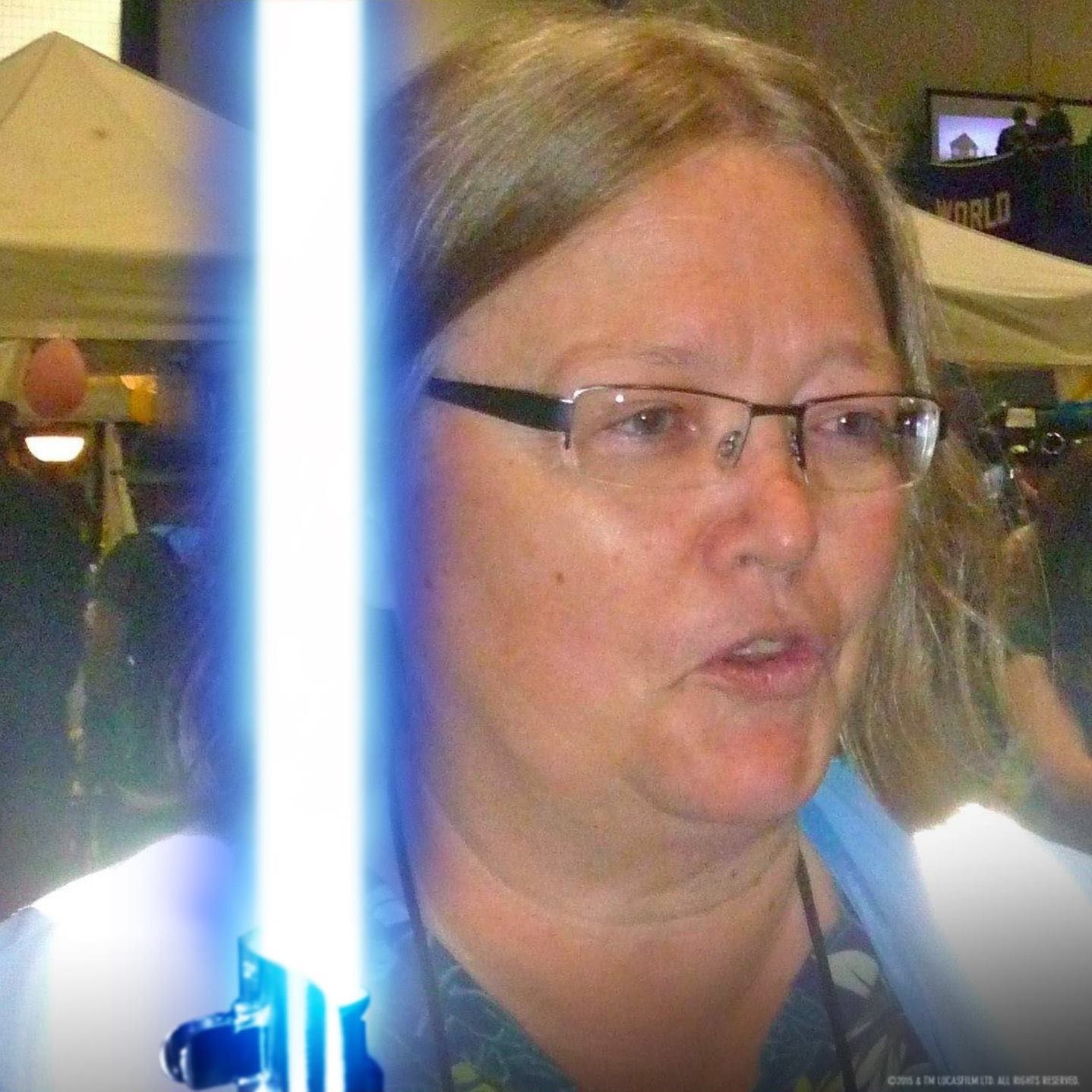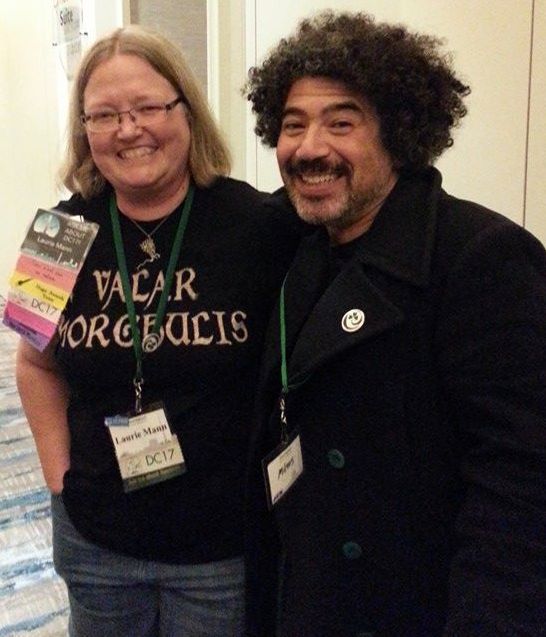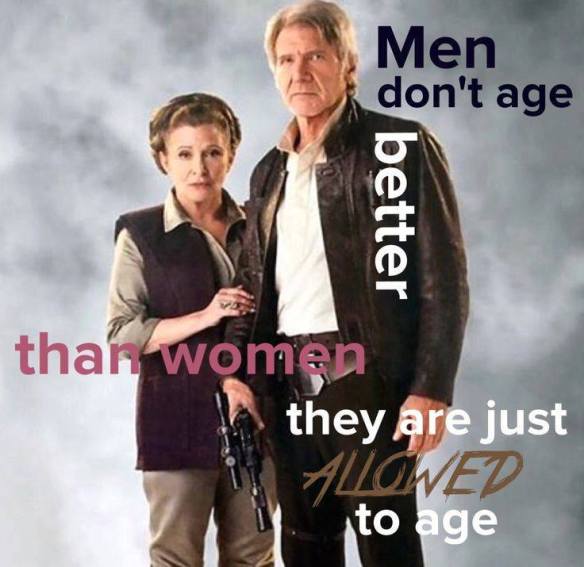Charles Stuart, Puppetmaster
A Look Back at a Notorious Boston Murder with Racist Overtones
Laurie D. T. Mann
Let me tell you a story
'bout a man named Charlie
On this famous, and fateful day,
Took his car into Boston,
Shot his wife and himself
So they wouldn't too look hard his way!
Chorus
Did he ever get caught,
No he never got caught!
'Cause he told such an artful lie,
Said they both got shot
By a black man in Boston,
And everybody said "What a poor guy."
Charlie picked up his car phone
To call the cop dispatcher
Asked to send help to Mission Hill.
Said his wife was unconscious,
And he was lost and bleeding
Said a black man had been in on the kill.
Chorus
Did he ever get caught,
No he never got caught!
'Cause he told such an artful lie,
Said they both got shot
By a black man in Boston,
And everybody said "What a brave guy.''
"Round the black men up.''
Called the cops in Boston,
"One of them did this awful crime.''
But the Stuart boys knew
Their big brother was a killer
And they lied for him the whole time.
Chorus
Did he ever get caught,
No he never got caught!
'Cause he told such an artful lie,
Said they both got shot
By a black man in Boston,
And everybody said "What a sad guy.''
Finally Matt Stuart broke,
And he had to see the cops,
He told Charlie he had to tell.
Charlie hated being found out,
Couldn't deal with a trial,
So off the Tobin Bridge he fell.
Chorus
Did he ever get caught,
Almost never got caught!
'Cause he told such an artful lie,
Said they both got shot
By a black man in Boston,
And everybody said "What a bad guy.''
What is it about the Stuart case that makes me want to rip the head off of
every smiling white man I've ever seen? If you don't remember the notorious Stuart case,
here are the facts:
On October 23, 1989, Carol Stuart, a pregnant, white lawyer was shot in the
head in the Mission Hill neighborhood of Boston. Mission Hill is a racially-mixed
section of the city, with a high rate of drug users and crime. Her husband Charles, a fur store manager, who's been shot in the gut
by the same maniac, called for EMTs over his car phone. It happened
the people shooting the TV show 911 were riding through Boston that
night, and were there as soon as the ambulance was. So the
nation got some surprisingly graphic footage of a bleeding man in blue
jeans being put into an ambulance. The phone
call Charles made to the dispatcher was also broadcast nationwide. That
night, Carol died of her injuries
after her baby was delivered via C-section. The baby had immediate
seizures due to blood and oxygen deprivation.
Charles said they'd been shot by a black man with a raspy voice. The
Boston police turned Mission Hill into an armed camp, looking for this
man. Almost every black man too old to ride a tricycle and too young
to be in a wheelchair was stopped and searched, sometimes more than
once. Newspaper headlines screamed about racially-motivated
shootings. There were immediate calls for restoration
of the death penalty. A few days later, Carol was buried, and a
letter from her husband was read for the congregation ("Sleep with the angels, my
love...''). Two weeks later, little Christopher Stuart
died after his father had him taken off of life support.
The Boston police arrested a man named William Bennett a few days later.
He was arrested for a video store robbery, but came under immediate suspicion
as the murderer in the Stuart case. There were almost daily
leaks from someone in the police department about how Bennett
was probably the murderer. While he had a raspy voice and a
massive criminal record, his mother insisted he was not around Mission
Hill the night of the shootings. Just after Christmas, Charles
Stuart identified William Bennett as the person who most
looked and sounded like the man who shot them. A police source promised
that Bennett would be formally charged with the shootings any time.
What's wrong with this picture? Everything I stated is true:
- A white woman is killed in a black neighborhood, and her
prematurely-delivered baby dies a few weeks later.
- Her husband is seriously shot and says
a black man did the shooting.
- The black man and his family protest
his innocence in this case.
These stated facts may be true, but they are not the truth of the matter at
all. The truth of the matter was that Charles
Stuart manipulated his wife,
his family, the Boston police, the media, and even the nation to
almost
get away with murder. Yes, it's easy
now to look at the trail he
left---talking to old classmates about murder ("as a joke''), taking
out insurance policies on his wife, and stealing his employer's
gun. But the fact is, we all bought his story.
I remember when the word first hit the local radio on Thursday, January 4th
that Charles Stuart's car was left running on the Tobin Bridge and a suicide note
was found in it. At that time, other than calling it a tragedy, the newscaster
only said the police had a warrant out for his arrest. My initial
reaction was that the police had really fouled up this time. There was no
way Chuck Stuart could be guilty.
As the "true" story began to unfold on the radio that morning, it was far
more chilling than the official version we had heard. The murder of Carol
Stuart was not an act of random violence by a robber, but was the
calculated murder of a wife by her husband. Charles Stuart played
on the ingrained racism of the Boston community by selecting the
locale of the murder and the race of the man he accused of the murder.
Charles Stuart wove a web of lies that we were all too ready to believe.
And he was aided and abetted by his younger brother Matt, a 23-year-old
accessory who caught Carol's purse from his big brother's car
window just after the shooting.
Matt Stuart, through family lawyers, maintains that he had no idea what
was going on, and he thought it was just an insurance scam. This kid
went on to be a pall-bearer for his sister-in-law's casket. Sure, he
had no idea...While it took him a few months, his conscience eventually
got the best of him, and he took the true story to his other brothers and
sisters, their parents, and, eventually, to the police.
I can believe the public and the media being taken in by this case.
However, I find myself very angry with the police in this case. Why
were the police so ready to buy Stuart's story? Why didn't they
investigate the Stuart's story a little more deeply? Are police investigators
supposed to be a little more suspicious? And why did it take
Matt Stuart's confession to get the police off of Willie Bennett?
Let's look at Willie Bennett, the man the police never formally charged with
the murder. Bennett is an inarticulate
man whom the Boston Public
Schools labelled as a mental defective when he was a student. A
school dropout, he's been involved in a number of shootings and robberies
over the years, and spent many years in jail. On top of not being a
model citizen, one of Bennett's crimes was the shooting of a police
officer. And nothing gets the police angrier than dealing with a
cop-shooter (I don't think he killed the cop). Unless, of course, they
are dealing with a black ex-con who has at least one cop-shootingon his
record.
While I never suspected Charles Stuart of the murder, I also never believed the
case against WIllie Bennett. It seemed
too convenient, too easy, The two
main pieces of "evidence" against him was that Charles Stuart said
the shooter had a raspy voice, and that he was wearing a jogging outfit. So the
police were out after a black man wearing a jogging outfit
in a racially-mixed area. Funny
thing was, other than Charles Stuart, no one remembered seeing
a man matching that description anywhere near the shooting.
Some hearsay was also involved in this case. The police reported that a
teenaged friend of Bennett heard Bennett boast of the killings. But the
teenager apparently formally recanted the story shortly thereafter, and now
claims the police pressured him into making that statement. The
Boston police have a history of "stretching the truth" to accuse the
wrong person of murder, particularly when a black man is involved.
There's another notorious case in the local courts right now,
involving the murder of a police officer during a drug raid. It is clear
that one of about nine people in the crack house that night shot Sherman
Griffiths. The police have accused Albert Lewin, a black man, and
bolstered their case against him by stretching the truth. But justice
is supposed to be served when the facts are presented in court
and a jury makes a determination based on those facts. When the
police come down on Griffiths' partner and order him to commit perjury
to bolster the case, where is justice served? Perhaps Albert Lewin
is guilty. But convict him on facts, not on fantasy.
In many
crimes, the police take an automatic "blame-the-victim" mentality. This
tends to be particularly true of black on black crimes in poor
neighborhoods. Boston had a rash of shootings, many of them
drug-related in Mission Hill and other nearby neighborhoods over the
fall. "It's a dangerous place to be," the police would say as they put
another body in the back of an ambulance. There was some public
outcry when a black grandmother was killed in her house in a driveby
shooting. But nothing matched the public hysteria of the Stuart case.
The factor of racism cannot be underestimated in this case. It made the police
and media sloppy, it reinforced the danger of black neighborhoods
to a largely white public, and it made the black community
furious. There have been calls for the police commissioner to
resign, and for black boycotts of both the Boston Globe and
Boston Herald. There are calls for some sort of state
commission to investigate
the police and media handling of the case. It is not clear
what will happen officially as a result of this case. I hope
it will make us all a little more skeptical.
Another important factor in this case is the way the media made Charles and
Carol Stuart out to be the "perfect couple." After the shooting,
everyone said how much in love they were, how wonderful Carol was, and how
distraught Charles was. But almost as soon as Charles' body was pulled
from the river, a different portrait emerged. Neighbors commented
that Carol often fought with Charles over his "Friday nights out."
Charles was not looking forward to being a father. They had a big
fight when Carol invited an insurance agent to their home, because
she was concerned about how much Charles was spending on insurance.
She even commented to friends that she couldn't understand why Charles
had bought so much life insurance on her...
Why didn't any of these stories emerge earlier? Did people not tell them to
reporters, out of respect for the dead? Or did some reporters hear
the stories, and disregard them because they didn't paint the
picture of Carol and Charles Stuart as the perfect couple?
The Stuart case is one of those instances where there are more
questions than answers. For example:
- Why did the younger Stuart brothers lie
for their brother for over two months?
- Matt Stuart told one brother, Michael, not long after the shooting.
Yes, they were worried about telling their ailing parents, but to
the point of letting their older brother get away with murder?
- Why didn't the fur store owner check on
the location of the fur store gun, when he heard that one
of his employees was involved with a shooting with just
that type of gun?
- The fur store owner said that they only had the gun as an insurance
requirement, and never made the connection until Charles committed
suicide. Indeed, the gun was missing from the safe,
and was later pulled out of the river where Matt Stuart had thrown it.
- Why weren't the police a little more skeptical about Charles' story?
- Some doctor familiar with the case said that abdominal wounds like the
one Charles had are often self-inflicted. Because the wound was so
serious, they did not think he shot himself.
- What made Charles Stuart tick?
- Charles Stuart was probably a sociopath. Only a
sociopath could lie to his wife
and everyone he knew the way he did, commit murder, and play the
role of distraught husband almost perfectly. This murder was literally
months, if not years in the planning. He showed no remorse for the
murders of his wife and son. His
suicide note only said he did not
have the strength to go on.
Apparently,
he wanted the insurance money to open a restaurant. A few days
after his suicide, someone dug up a commercial the fur store had made.
It showed a smiling Charles Stuart, admiring a model in a fur coat.
It made me want to kick in the TV screen.
Document: Charles Stuart, Puppetmaster A Look Back at a Notorious Boston Murder with Racist Overtones
Web URL: http://dpsinfo.com/essays/charlie.html
Updated: 03/21/2019 01:51:28 |
|  |
dpsinfo.com Site Map * * To Top of Page





